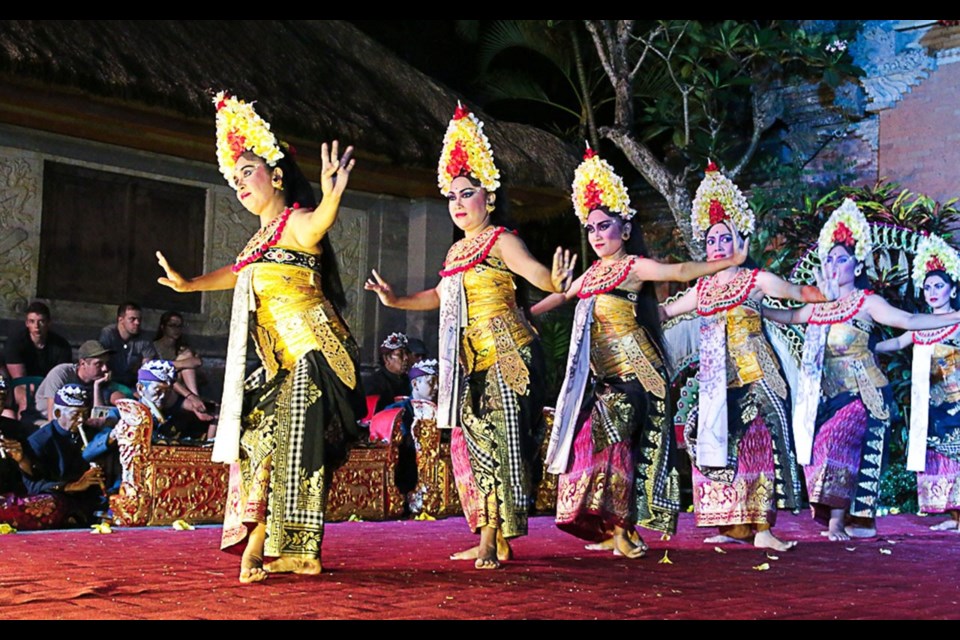Bali is one of southeast Asia's most popular destinations yet opinions differ as to what attractions there are for visitors. Twenty years ago it was all surf, shops, bars and gaudy dance joints but that picture is now paralleled by romantic resorts, family holidays, visits to dewy terraced rice fields, cultural performances and healing hotels and activities.
Bali has been marketed as the "Last Paradise," the "Island of a Thousand Temples," the "Island of the Gods" and so forth. The doom merchants dismiss Bali as a Lost Paradise rather than a last one. They are wrong. Few visitors will be enthralled by the traffic-congested nightmare of souvenir shops, fast food restaurants and motorcycles that is Kuta but hundreds of thousands of young people still flock here every year. Some of the major hotels are a bit too westernized and sanitised for my taste but many visitors love this safe Western-Indonesian ambience.
Don't get me wrong. I enjoy the Bali beaches and the lifestyle that goes with it. The surf can be great, the beaches are OK although they are not the greatest in the world, I enjoy a beach massage, and there is something magical about watching the sun setting across the water while you are enjoying a beer or a meal to the sounds of a local band. But after a few days, I have had enough and I want to head inland.
In one way, Bali is little different from a hundred good holiday destinations; those who seek, will always find. If you want surf, cheap beer, sand beaches, and pop music, you can find them. If you want to find the traditional art and dance, or painting and carving, you will. If you want to walk through rice paddies, discover cool waterfalls and relax in hill seclusion, you can. Bali caters to just about everyone.
Deep in the emerald, rice-terraced hills of central Bali is Ubud with its art galleries and studios. This area has spectacular landscapes of ravines and valleys, criss-crossed by the numerous streams which help make Bali such a fertile place. Despite the fact that it is thronged with Westerners keen to immerse themselves in Balinese culture, and Chinese who have arrived here in tour groups, Ubud still has a certain charm, though it suffers from its success.
There seems to be an unspoken rule in Ubud, in fact in all of Bali; if there is a bare stone surface you need to carve it. You see bug-eyed stone gods, fierce garuda birds, winged lions, frogs and turtles. But the art doesn't stop here. Just walking the pavements becomes an exercise in dodging the small and disposable works of art and floral offerings placed to appease the gods.
Apart from just enjoying the Ubud scene, there are several places to visit. The Tegallalang Rice Terraces are famous for the beautiful scenes of rice paddies that offer a perfect Bali photo opportunity. The vista sprawls down from the road to the rice terraces on the slopes across the valley. Naturally, there are souvenir shopping options along the roadsides, and the trip to nearby Pakudui village is worthwhile.
Ubud Monkey Forest is one of Ubud's most popular attractions; a natural forest sanctuary that is home to a horde of grey, long-tailed macaques. Besides watching playful monkeys in their natural habitat, the site offers cool walks along paved pathways through a leafy nutmeg forest. Beautiful ancient temples with guardian statues covered in moss also feature throughout the forest.
The Ubud Art Market is located opposite the Royal Ubud Palace and is open daily. Here you can find beautiful silk scarves, lightweight shirts, handmade woven bags, baskets or hats; statues, kites and many other hand-crafted goods. Most of the goods found here are made in the neighbouring villages. Prices vary, depending on your bargaining skills. The Ubud Palace, incidentally, has an excellent dancing performance every evening which shouldn't be missed.
Elsewhere there are a couple of temples worth seeing. Tanah Lot Temple is one of Bali's most important landmarks, famed for its unique offshore setting and sunset backdrops. An ancient Hindu shrine perched on top of an outcrop amidst constantly crashing waves. The onshore site is dotted with smaller shrines restaurants, shops and a cultural park presenting regular dance performances. On the holy day of Kuningan, five days prior to the temple's anniversary date, the heirloom pilgrimage is one of Bali's festive parades worth witnessing. Upcoming dates for this are Nov.15, 2017 and June 13, 2018. The temple is located in Beraban village about 20 kilometres from Kuta.
Uluwatu Temple, one of six key temples believed to be Bali's spiritual pillars, is renowned for its magnificent location, perched on top of a steep cliff approximately 70 metres above sea level. The temple is definitely one of the top places on the island to go to for sunsets, with direct views overlooking the beautiful Indian Ocean and daily Kecak dance performances. Balinese architecture, traditionally-designed gateways, and ancient sculptures add to Uluwatu Temple's appeal. There is a small forest with hundreds of monkeys. Visitors must wear a sarong and a sash, as well as appropriate clothes common for temple visits. They can be hired here.
For more of Len's travel stories go to www.LenRutledge.com




